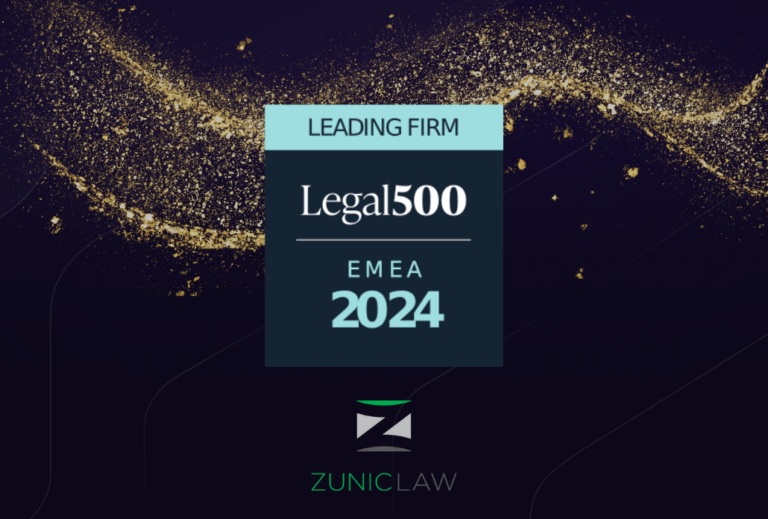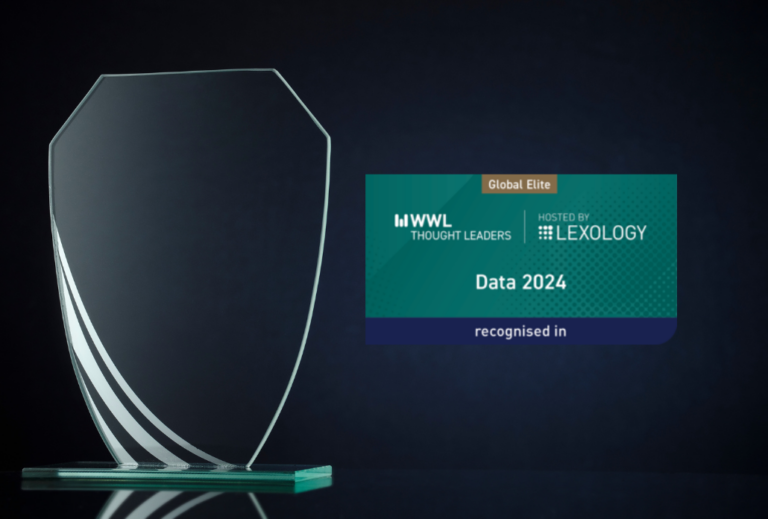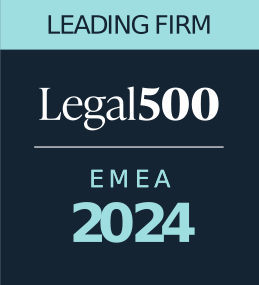
Intellectual property (IP) is the heart of the 21st-century company, an essential motor driving innovation, competitiveness, and the growth of businesses and the economy as a whole. According to the research conducted in the previous years by Ocean Tomo, the value of the intangible asset grew from 68% to 84% within just two decades – from 1995 to 2015.[1] The same research has been updated in 2020, as part of the analysis of the economic effects of COVID-19, and the results have shown that the value of the immaterial assets has continued to grow, to even 90%[2]. Therefore, it is justifiable to say that in the Digital Age, IP theft is set to rise within the coming years and could potentially affect thousands of companies and startups, especially in the IT industry. The Internet has definitely made theft easier than ever before.
IP theft is a business leader’s nightmare – it may mean forfeiture of the first-to-market advantage, loss of profitability, or—in the worst case—losing entire lines of business to competitors or counterfeiters. Therefore, whether you are a startup or an established company, it is never too early to build protective walls around your IP. Do not wait until it is too late!
Which rights are included in the Intellectual Property of my Business?
Intellectual property (IP) refers to creations of the mind. We are surrounded by and constantly interact with someone’s intellectual property. For example, while reading this blog post, you will come across photographs protected by copyright, you are sitting in front of your computer which bears a brand name protected by a trademark (for example, Lenovo), or you are probably sitting on a chair possibly protected by design rights and you might be holding a pen whose mechanism has been patented at some point.
There is a general consensus as to what makes the core of IP content, such as literary, dramatic, musical and artistic works, recordings, films and broadcasting, inventions, registered and unregistered designs, signs, names and images capable of distinguishing the goods or services. [3] Therefore, anything you have created, from an idea of how to develop your business to the logo or computer code, may represent your intellectual property.
For instance, if you are an IT company, a piece of software you developed is protected by your copyright.
Intellectual Property is protected by the IP rights such as:
- copyright,
- patents,
- designs,
- trademarks,
- geographical indications, and
- trade secrets. [4]
Intellectual property rights give their creator the right to exploit this property and prevent others from making unauthorized use of its IP without the creator’s approval, for a limited period of time. However, although there is a general consensus on what is the subject of IP rights – a book, a song or a movie, the scope and limits of Intellectual Property Law are not completely clear. [5] In this brief overview, we will focus only on the most common types of IP rights in our daily practice: trademarks, copyright, patents and trade secrets. On the other hand, the industrial design as another right within this category, along with the possibilities when it comes to its protection, has been covered by a separate text available on our blog.
.
Intellectual Property Protection – why does it matter?
As an IP owner, you are entitled to enjoy the benefits of your hard work, as well as the results of your investment in the creation and success. This means that you can decide if and how your property can be used.
Your creations are vital for the growth of your business. In fact, IP rights provide you with a mechanism for earning financial benefit for their use by others. If your intellectual creation is stolen, your competitors may reap without sowing, unfairly diminishing your competitive advantage and damaging your business. In the era in which hardly a day goes by without each of us googling something, it has never been so easy to access information and the chances of your work being copied have never been greater. Therefore, protecting your IP became more important than ever before.
Who Can Steal My Business’s IP?
We often see theft of intellectual property by current or former employees in a company. Theft can have various forms from taking certain sequences of software to stealing a part of a company’s business name (especially if the company has previously failed to register a trademark). It is very common to see the unlawful use of confidential information for the purposes of establishing a business competitive with its former employer, which tends to be detrimental in the absence of a properly drafted non-disclosure agreement (NDA).
In the case of IT companies, apart from employees, theft is commonly performed by entrepreneurs who offer software development services to the IT company.
Nevertheless, it is not unusual to see both competitors, and criminal and recreational hackers, as IP thieves as well.
How Do I Protect My Business’s IP?

Some IP rights are automatically safeguarded by IP laws (such as copyright), while others require a certain activity, i.e., some form of legal action (trademarks, patents, which must be properly registered). Nevertheless, when it comes to confidential information, you need to make sure you have proper internal confidentiality procedures in force.
So what can you do?
Although below you will find some useful advice for the protection of each individual IP right, let’s start with some items that are common for all the rights:
- Be careful of third-party assistance!
If you’ve hired a person or company to create your IP and/or products, it is vital you have a detailed and protective agreement in place. This should assign full ownership rights to you upon payment or completion, as these do not automatically transfer to you. Such agreements are especially important in the IT sector.
- Carefully draft Employment Contracts
If your own employees create the IP during their employment, you need to ensure that IP stays in your company in any scenario. Although there is a legal assumption in that regard, there are several issues that must be stipulated by the employment agreement as well, in order to achieve comprehensive protection.
- IP License Agreement
In case you would like to provide permission to use your IP to another party, be careful with the IP license agreement to be able to maximise your profit and at the same time retain control over it.
Trade Secrets

The most jeopardized IP nowadays is actually trade or corporate secret, rather than IP already in the public domain (such as trademarks and patents). Why? Well, because it can be monetized quickly. Thus, unlike other types of cyber crimes such as the theft of credit cards or personal data, it may take considerable time to be discovered.
It can easily be said that copyrighted data, such as software code is one of the most endangered categories. Among other popular targets are also business strategies, customer lists, merger plans, manufacturing processes and etc.
So, how do you protect your business from the misappropriation of trade secrets?
These are the ways:
Introduce confidentiality and security procedures (which are in practice set out by a separate and detailed Rulebook).
Sign carefully drafted non-disclosure agreements with employees, subcontractors and business partners.
Collect evidence of confidentiality procedures and possible misappropriation.
Do not forget to conclude properly drafted contracts with non-compete clauses.
Our attorneys can help formulate policies and procedures to help protect your critical know-how. By implementing procedural and physical safeguards, NDA execution and auditing, and robust enforcement practices, it is possible to achieve protection for your trade secrets.
Trademarks

A trademark is an IP right protecting a certain sign which is used in the market to distinguish certain goods or services from the other same or similar goods or services.
For instance, a brand of a company can be protected by a trademark.
A trademark may include a word, name, symbol, logo, or combination thereof with a purpose to indicate the source of the goods or services. The main function of a trademark is to prevent customers from being misled or deceived. Therefore, even if you own a web domain or register a company under a certain business name, you are not fully protected. If someone decides to register, for example, the same word or logo as a trademark, you could be forced to re-brand the entire business.
For many businesses, the brand value may far exceed the worth of the company’s tangible assets. Therefore, no wonder why Don Keough, chief operating officer and a director of The Coca-Cola Company from 1981 to 1993, has said: “I define my role as president of The Coca-Cola Company very simply: It is to protect and enhance the trademarks of the company.”
In order to be eligible for protection, a mark must be distinctive of the proprietor so as to identify the proprietor’s goods or services. To obtain trademark or service mark protection you need to file an application for trademark registration either nationally, regionally (European Community), or internationally. In Serbia, trademark applications are to be sent to The Intellectual Property Office in Belgrade. The application needs to precisely specify the goods and/or services for which the trademark is to be registered. Before sending the application, it is absolutely vital to undertake an analysis of the registered mark database to avoid the application being refused or to reduce the risk of potential trademark infringement, which may have very costly consequences.
Copyright

An idea, no matter how original, will not be protected until it is expressed in some way – that is the moment when the copyright enters the scene. However, international IP law expressly prohibits the introduction of formalities for the protection of copyright, meaning that, unlike in the case of trademarks and patents, creators enjoy protection without the need for registration of their works. The intangible property protected by copyright law is distinctive in that it arises automatically.
Copyright provides a scope of exclusive rights to the authors of:
- literary works (books, brochures, articles, translations, software),
- oral works (lectures, speeches, etc.),
- dramatic works,
- dramatic-musical works, choreography and pantomime,
- musical works,
- movie works,
- works of fine art (paintings, drawings, sketches, graphics, sculptural works),
- architectural works,
- cartography works (geographic and topographic maps),
- plans, sketches, models and photography,
- theatre works.
As you can see, the copyright covers the entire spectrum of the different works. In order for your intellectual work to be protected by the copyright, it must fulfil one condition – originality. However, there is no generally accepted interpretation of this term, and neither there is a legal definition, so in case of an eventual proceeding the court will need to determine whether a particular work is original or not.
As a copyright owner, you have two types of rights – economic and moral rights.
- Economic rights are property rights which are limited in time and which may be transferred by the author to other people in the same way as any other property. They usually include the right to reproduction, the right to distribution, the right to make the work available to the public, as well as the right to make an adaptation of the work.
- On the other hand, moral rights are the rights of creators of copyrighted works, such as, among others, the right of attribution, the right to have a work published anonymously or pseudonymously, as well as the right to object to the jeopardizing of the work’s reputation or honour. Moral rights are tightly related to the personality of the author, which is why they cannot be transferred to another person by contract.
Patents

Inventions, both products and processes, which are
- new,
- inventive, and
- are industrially applicable,
may be protected by a patent.
A patent confers an exclusive right granted by a state to an inventor for a certain period of time in return for disclosure of his or her invention to the public. In other words, the patent protects the new inventions of a certain technological significance and contribution.
Under the Serbian law, inventions may be protected by:
- patent, which lasts for 20 years from the date of filing the application, or
- petty patent, which lasts for 10 years from the filing date of application.
Similar to some other rights we have previously analyzed, a patent provides for a wide scope of rights to its owner, such as the right to use in the production, right of disposal or distribution. However, given that the patent must be new, before filing an application for a patent or petty patent it is crucial to check if your invention has already been protected and find information about the inventions belonging to the same technical field.
Regardless of whether your business is recognizable by the distinctive trademark or you are developing an innovative technical solution that has never been seen on a market before, one thing is for sure: the adequate protection of your intellectual property is one of the key steps in the (successful) fulfilment of your business plan.




















